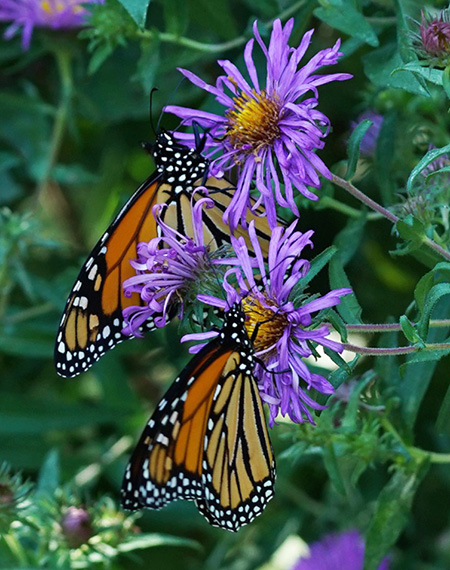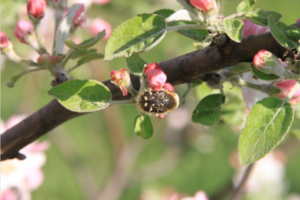Native Plant Conservation Campaign News: Viral video dramatically demonstrates that in pollinator conservation - “native plants do it better!”, science agrees

September 9, 2019
A beautiful example of the benefits of conserving and expanding native plant communities is making the rounds on social media.
Several new videos show masses of monarch butterflies swirling around a farm and a family in Southern Minnesota. The butterflies were attracted to the tens of thousands of native flowers planted by a landowner.
Dustin Demmer, a native wildflower producer, interviewed by a local television station, noted that the plants draw all sorts of pollinators, as well as songbirds.
He also said it doesn’t have to be a rare sight.
"This sight can really happen on any piece of property whether it is downtown Minneapolis, or rural America or even the suburbs. Where if you plant native plants you will immediately see more pollinators, more insects more birds.”
And there are implications for other cities:
"As [cities] expand and new developments are putting in landscaping and they have a choice. They can continue to do the traditional daylilies and European grasses which don't really support many of these pollinators or they can choose to do native landscaping which supports pollinators, which supports birds and also looks really nice,” said Demmer.
The video provides a dramatic example of a phenomenon that scientists have documented increasingly (see below) in recent years: healthy, diverse native plant communities support healthy, diverse native pollinator communities.
Diverse insect communities, in turn, do a better job of pollinating crops and supporting songbirds and other wildlife than monocultures of European honeybees.
So, plant local native plants in and around your farms, buildings and gardens because:
They are beautiful!
They support local pollinators, birds and wildlife!
They help produce more and better crops!
Examples of recent studies of these native plant – insect – wildlife interrelationships include:
Researchers found that orchards surrounded by agricultural landscapes had 55 percent fewer bee species than those bordered by natural areas (which provide shelter, nesting sites and additional pollen and nectar). Apples from orchards with low bee diversity generally contained fewer seeds and weighed less Diversity-poor orchards also had more misshapen fruit.
(Note: last two articles co-authored by NPCC Advisor Doug Tallamy)
Further, European Honey Bees actually can harm native pollinators and wildlife:
Photos:
Monarch butterflies (c) Doug Tallamy
Beetle pollinating apple. Public Domain
 September 9, 2019
September 9, 2019 September 9, 2019
September 9, 2019